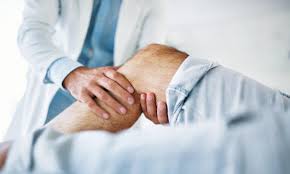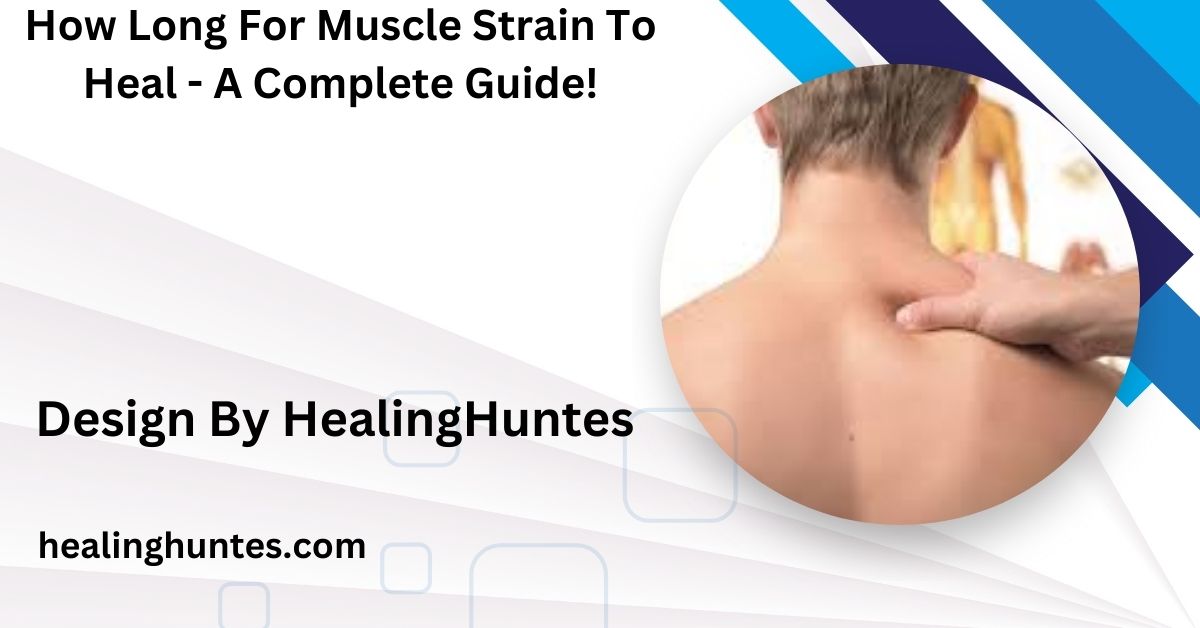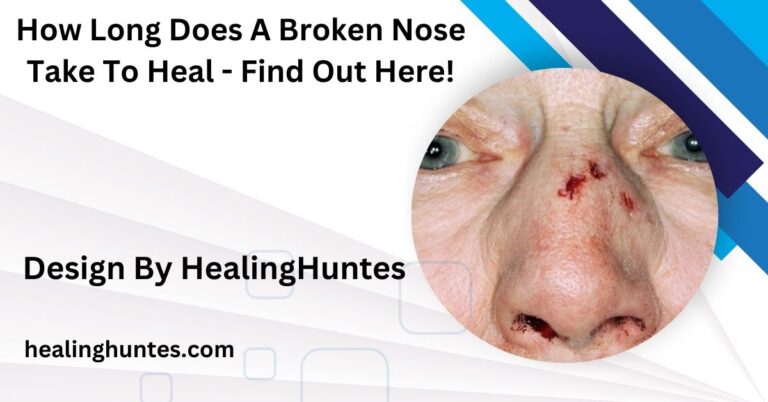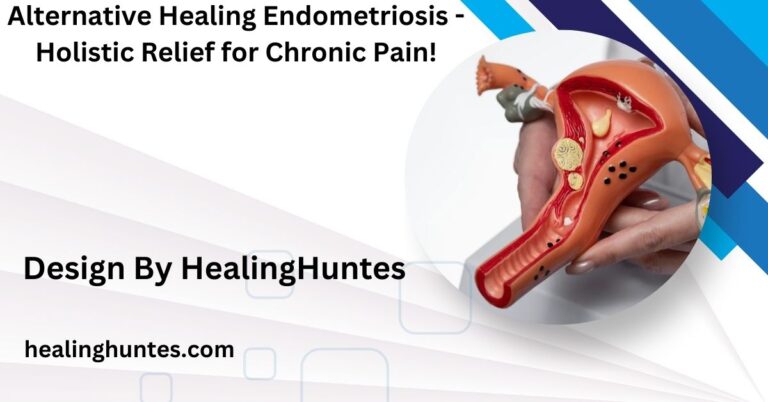How Long For Muscle Strain To Heal – A Complete Guide!
Muscle strain healing times vary, but rest, gradual stretching, and proper nutrition can aid in a faster recovery.
In this article, we explore the typical healing timeframes, factors that influence recovery, and effective strategies to speed up the healing process.
Understanding Muscle Strains: Types and Symptoms

Muscle strains occur when muscles are overstretched or torn, often due to sudden movements, improper lifting, or overuse. Strains are classified into three grades:
- Grade 1: Mild strain with minimal muscle fiber damage and light soreness.
- Grade 2: Moderate strain, partial tear in muscle fibers, with more intense pain and swelling.
- Grade 3: Severe strain with a complete tear in the muscle, leading to significant pain, swelling, and sometimes inability to move the muscle.
Grade 1 strains often heal within a few weeks, while Grades 2 and 3 can take longer, sometimes requiring medical intervention or even surgery.
Factors Affecting Muscle Strain Recovery Time:
Healing times can vary based on several factors, including:
- Severity of the Strain: Mild strains may heal within 1-2 weeks, while moderate strains can take a month or more.
- Age: Younger individuals often recover faster, as older muscles may heal more slowly.
- Overall Health and Fitness: Individuals who are generally fit and maintain a healthy lifestyle may experience quicker recovery times due to better blood flow and muscle condition.
- Nutrition: Protein intake, vitamins, and minerals play a crucial role in muscle repair and healing.
Also Read: How To Heal Cavities In 2 Days – Cavity Healing Tips!
Typical Recovery Timeframes for Muscle Strains:
Recovery time for muscle strains varies but falls into general ranges:
- Grade 1 Strain: Typically heals within 1-2 weeks.
- Grade 2 Strain: May take up to 6 weeks to heal.
- Grade 3 Strain: Often requires several months to heal completely, with some cases needing surgery for full recovery.
These times may vary depending on the muscle affected, as larger muscles like the hamstrings or quadriceps may take longer to heal compared to smaller muscles in the arms or shoulders.
How to Support Muscle Healing Naturally:

Supporting muscle healing can help reduce pain and speed up recovery. Some natural ways to promote healing include:
Rest and Protect the Muscle:
Resting the affected area is essential, especially in the first few days. Avoid any activities that could worsen the injury. In more severe cases, a brace or sling may be recommended to support the muscle.
Apply Ice and Heat Therapy:
Ice can help reduce swelling and numb pain in the initial stages, usually within the first 48 hours. After swelling subsides, heat can promote blood flow to the injured area, aiding in faster recovery.
Gradual Stretching and Light Exercises:
After the initial pain has subsided, light stretching and strengthening exercises can help regain muscle function. Avoid stretching too soon, as this can worsen the strain. Physiotherapists can guide specific exercises for different muscle strains to restore flexibility and strength.
Also Read: How To Heal A Dysregulated Nervous System – Nervous System Recovery
Adequate Hydration and Nutrition:
Staying hydrated and consuming a balanced diet rich in protein, vitamins, and minerals is crucial. Protein helps repair muscle fibers, while vitamin C, D, calcium, and magnesium support the healing process.
Massage and Physical Therapy:
Massaging the affected muscle gently after the initial acute phase may help relieve tightness and improve blood circulation. Physical therapy, including techniques like ultrasound or electrotherapy, may also aid in recovery for more severe strains.
Avoiding Common Mistakes During Recovery:

Avoiding certain mistakes during recovery can help prevent setbacks and re-injury. Here are some of the most common mistakes people make:
- Returning to Activity Too Soon: Many people feel better within a few days and return to their usual routines too quickly, leading to re-injury.
- Neglecting Physical Therapy: Skipping physical therapy can slow recovery, as it helps regain muscle strength and flexibility.
- Ignoring Pain: Pain is a signal that the body isn’t fully healed. Ignoring pain can prolong recovery and worsen the injury.
When to Seek Medical Advice:
For mild strains, at-home care is typically sufficient. However, for severe pain, swelling, bruising, or if the muscle appears deformed, consult a healthcare professional. Grade 3 muscle strains may require surgery or other medical interventions to repair torn muscle fibers.
Also Read: How Long Does Tattoo Take To Heal – Tattoo Healing Timeline!
Long-Term Recovery and Prevention of Muscle Strains:
After healing, it’s essential to take steps to prevent future strains. Here are a few strategies:
- Warm-Up and Cool Down Properly: Always start with a light warm-up and end with gentle stretching to prepare and relax muscles.
- Strengthening Exercises: Building muscle strength, especially in frequently used areas, can help prevent future strains.
- Maintain Flexibility: Regular stretching keeps muscles flexible and less prone to injury.
- Proper Technique: Practicing proper lifting and movement techniques reduces strain on muscles and lowers the risk of injury.
FAQ’s
1. How long does a mild muscle strain take to heal?
Mild strains typically heal within 1-2 weeks with proper rest and care.
2. What is the fastest way to recover from a muscle strain?
Rest, ice therapy, gradual stretching, and a balanced diet can speed up recovery.
3. Can I exercise with a muscle strain?
Light activities may be possible for mild strains, but avoid high-intensity exercises until healed.
4. When should I see a doctor for a muscle strain?
Seek medical attention if there is severe pain, swelling, bruising, or difficulty moving.
5. How can I prevent future muscle strains?
Warm up before activities, practice proper form, and strengthen and stretch muscles regularly.
Conclusion
The question of “how long for muscle strain to heal” depends on the strain’s severity and individual factors. While mild strains may heal in a couple of weeks, more severe injuries can take months. By following a balanced recovery plan, listening to the body’s signals, and gradually reintroducing activity, you can promote a safe, complete recovery and reduce the risk of future muscle strains.






